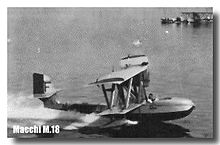Compañía Aero Marítima Mallorquina
Compañía Aero Marítima Mallorquina SA (CAMSA) was a Spanish airline based in Palma .
history
CAMSA was founded in 1921 by the Spanish aviation pioneer Manuel Colomer Llopis (1895–1922). CAMSA was financed by the Spanish entrepreneur José Tous Ferrer. On May 31, 1921, the first CAMSA seaplane of the type Savoia S-16 , piloted by Manuel Colomer, landed in the port area of Palma. CAMSA had acquired this machine in Sesto Calende (Italy) and the chief pilot Colomer transferred it to Barcelona. There she picked up the first mail for transport to the Balearic Island . It was still a trial run of the airmail .
The machine was stationed in the bay of Cala Regana ( port area of Palma ) and baptized with the name Mallorca and started the postal service between Barcelona-Palma- Ibiza . In June 1921 a second machine, built by Talleres Ripoll de Palma de Mallorca , was put into operation and named Ramón Llull . The Ramón Llull was basically a replica of the S-16 with a 300 hp Fiat A.12 engine and some modifications for postal flight operations. CAMSA acquired three more machines of the Macchi M.18 type at the end of 1921 , they were baptized with the names Barcelona , Menorca and Ibiza and the "Ministerio de Fomento" then issued CAMSA on April 7, 1922 the official approval for air mail traffic.
Early end of the CAMSA
On April 8, 1922, Colomer and his mechanic "Cesare Tizzi" started according to plan in Palma with the destination port of Barcelona . The machine with the callsign "Ibiza" did not arrive in Barcelona. The "Comandancia de Marina de Barcelona" ordered a search for the missing machine. The crew of the ship "Margarita Taberner", which was en route from Vinaroz to Barcelona, found the remains of the machine at sea and was able to rescue the seriously injured Cesare Tizzi. The pilot Manuel Colomer remained missing, however, and his remains have never been found.
The subsequent investigations, mainly on the basis of Tizzi's statements, led to the assumption that engine failure caused the aircraft to spin and that the impact could not be avoided due to the low altitude above sea. In his memory, the Aero Marítima Mallorquina named the third Savoia S-16 after him.
However, the CAMSA company did not recover after the loss of the company's founder and was subsequently dissolved as a result.
